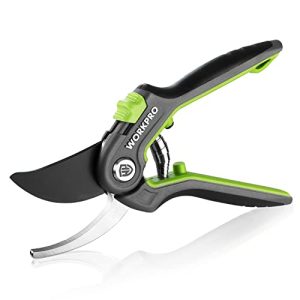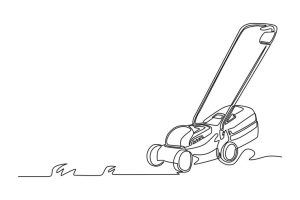Picture this: it’s the middle of winter, and you need to dig a hole in the frozen ground. The task seems daunting, and you might be wondering where to even start.
The cold is biting, the earth is hard as rock, and frustration can quickly set in. But don’t worry, you’re not alone. Many find themselves in the same situation, needing to tackle the seemingly impossible challenge of breaking through the icy surface.
This guide is here to help you conquer the cold and dig that hole with confidence. By learning some practical tips and leveraging a few clever techniques, you’ll discover that digging in frozen ground isn’t as difficult as it seems. So, let’s break the ice and get started! Your winter digging adventure awaits.
Tools For Frozen Ground
Digging holes in frozen ground requires special tools and techniques. A sturdy pickaxe or a heavy-duty drill can break the hard surface. Heating the ground with hot water or a propane torch helps soften it for easier digging.
Digging a hole in frozen ground can be challenging. The right tools make this task easier. Understanding which equipment to use is crucial. It saves time and effort. Let’s explore the essential tools needed for this task.Essential Equipment
Proper equipment is vital. A strong shovel is a must-have. Metal shovels work best in cold conditions. They cut through hard soil efficiently. Choose a durable, long-handled shovel for leverage. This helps reduce strain on your back. A pickaxe is another essential tool. It breaks up hard and icy layers. Use it to loosen compacted soil. A pickaxe with a sharp point works wonders. Portable heaters or propane torches can soften the ground. They make digging easier. Apply heat to the surface for a few minutes. This technique is effective but use it carefully. A digging bar is helpful for tough spots. Its heavy weight penetrates frozen layers. Use it to chip away at stubborn ground.Choosing The Right Tool
Choosing the right tool depends on soil conditions. Assess the ground hardness first. For moderately frozen soil, a shovel may suffice. If the ground is harder, a pickaxe might be necessary. Consider the size of the hole. For small holes, a shovel or trowel works. Larger holes require more robust tools. A digging bar or pickaxe provides better results. Safety gear is important too. Wear gloves to protect your hands. Use boots with good grip to prevent slipping. Proper attire keeps you safe during the task. Ensure your tools are in good condition. Check for rust or damage before use. Well-maintained tools perform better and last longer.
Credit: adventuresincemeteryhopping.com
Prepping The Area
Clearing the area of snow and debris is crucial before digging. Use salt or sand to help thaw the ground. Ensure all tools and equipment are ready to handle tough, icy conditions.
Preparing the area is crucial when you’re about to dig a hole in frozen ground. Proper preparation makes the task more manageable and less time-consuming. Imagine you’re about to start a new project in your garden during winter, and the ground is rock-hard. By following specific steps, you can transform this daunting task into a rewarding experience.Clearing Snow And Ice
Start by removing any snow or ice covering the area. Use a snow shovel to clear away the snow, creating a clean workspace. If there’s ice, a sturdy ice scraper will be your best friend. Breaking up the ice into manageable chunks can prevent accidents and ensure a smoother digging process. Have you ever tried to dig through a thick layer of ice? It’s like trying to cut through a frozen brick!Marking The Spot
Once the snow and ice are cleared, mark the exact spot where you need to dig. Use a bright-colored spray paint or flags to outline the area. This ensures precision and helps you stay focused on the task. Think about your last DIY project—remember how satisfying it was to have clear guidelines? The same principle applies here. Marking the spot saves time and effort by preventing unnecessary digging. Take a step back and visualize the final result. Does the marked area align with your plan? Adjust if necessary, ensuring you’re ready to start digging efficiently.Breaking Through The Surface
Breaking through frozen ground requires patience and the right tools. Use a heavy-duty pickaxe or metal digging bar to break the ice layer. Applying heat with a portable torch can also soften the ground for easier digging.
Breaking through the surface of frozen ground can be a daunting task, but with the right approach, it’s entirely achievable. Picture this: You’re bundled up in a warm jacket, staring at a patch of hardened earth that seems to defy your shovel. How do you conquer this icy challenge? With a little preparation and the right techniques, you can easily break through and reach your goal.Using Heat Sources
Applying heat to the frozen ground can soften its rigidity, making it easier to dig. Consider using a propane torch to gently warm the surface. Be cautious not to overheat and damage nearby vegetation. Another option is to pour hot water over the area. This method is particularly useful for smaller digging projects. You can also use heated blankets or electric thawing mats, which gradually melt the ice, giving you a head start.Effective Techniques For Initial Breakthrough
Start by scoring the ground with a sturdy pickaxe. Create a grid-like pattern to guide your digging. This prepares the surface for deeper penetration. Using a heavy-duty shovel, focus on the scored lines. Apply your weight and use your legs to generate more force. This approach maximizes your efforts and prevents exhaustion. Do you have access to power tools? A rotary hammer drill can be a game-changer. Equip it with a chisel bit to chip away at the frozen surface, making the task much quicker and less physically demanding.
Credit: www.youtube.com
Digging Strategies
Digging through frozen ground requires patience and the right tools. Start by loosening the surface with a pickaxe or crowbar. Pour warm water over the area to soften the soil, and then use a shovel to remove the softened earth.
Digging holes in frozen ground is no simple task. But with the right strategies, you can make the process more manageable. Below, we’ll explore practical steps and tips to help you tackle this challenge effectively.Step-by-step Guide
To start, gather all necessary tools. A sturdy shovel and a pickaxe are essential. Warm up the area using hot water if possible. Pour it over the surface to soften the ground. Then, use the pickaxe to break the ice layer. Once the surface ice is broken, use the shovel to remove the loose pieces. Continue this process, alternating between pickaxe and shovel. Repeat until you reach the desired depth.Handling Tough Spots
Some areas may prove more challenging. In these spots, patience is key. Try applying more hot water to soften the ground. You can also use a propane torch for additional heat. Gently heat the spot while being cautious. Avoid overheating to prevent damage. Use the pickaxe to chip away at stubborn ice. If progress stalls, take breaks to avoid fatigue. Persistence will eventually yield results.Safety Precautions
Wear insulated gloves and sturdy boots to protect against cold. Use a pickaxe or metal bar to break the frozen ground. Keep a safe distance from others to avoid injury from flying debris.
Digging a hole in frozen ground can be a challenging task, but with the right safety precautions, you can tackle this job effectively and safely. Cold weather conditions can pose specific risks, so it’s essential to take protective measures. By preparing adequately, you ensure your safety and make the task much more manageable.Protective Gear
Wearing the right protective gear is crucial. Start with thermal gloves to keep your hands warm and protected from frostbite. Waterproof boots with good insulation are also essential to prevent your feet from getting wet and cold, which can lead to hypothermia. Consider using a sturdy, insulated coat and layers of clothing to maintain your body heat. Safety goggles are important to shield your eyes from any flying debris or ice shards. A hard hat can protect you from falling ice or snow, especially if you are working near structures or trees.Avoiding Common Hazards
Be aware of hidden dangers beneath the snow and ice. Before you begin, identify any utility lines that might be buried in the ground. Contact your local utility company to mark these lines to prevent accidents. It’s also wise to check the weather forecast. Avoid digging during severe weather conditions, such as snowstorms or extreme cold, which can increase risks. Ensure your tools are in good condition, as dull or broken tools can lead to injuries. Stay hydrated, even if you don’t feel thirsty in the cold. Dehydration can impair your judgment and lead to fatigue, making you more prone to accidents. Always have a first aid kit on hand for any minor injuries that may occur. Have you ever underestimated the cold, only to find yourself in a challenging situation? Taking these safety precautions can help prevent that from happening again.Maintaining Equipment
Frozen ground poses a challenge for digging holes. Use a sturdy pickaxe or a heavy-duty drill to break through. Gradually remove the loosened soil with a shovel, ensuring safe and efficient progress.
Maintaining equipment for digging holes in frozen ground is crucial to ensure efficiency and longevity. The harsh cold can be unforgiving, not only to you but also to the tools you rely on. Proper care and maintenance can prevent unexpected breakdowns and costly repairs. Is your equipment ready for the next dig? Regular maintenance is the key.Post-digging Care
After completing your digging task, take a few moments to examine your tools. Wipe off any dirt and moisture to prevent rusting. Rust can be a sneaky culprit that slowly deteriorates your equipment. Store your tools in a dry place, away from the damp conditions that frozen grounds often bring. Consider applying a layer of lubrication to moving parts. This simple step can save you from frustrating jams during your next use. By ensuring your tools are clean and well-oiled, you’re investing in their future performance.Troubleshooting Tool Issues
Encountering tool problems can be frustrating, especially when you’re eager to get the job done. What should you do if your equipment falters? Start by inspecting for visible damage, like bent handles or cracked blades. These issues can often be fixed with a little DIY spirit or a trip to the hardware store. If a tool seems unusually stiff or difficult to operate, check for ice build-up. A quick thaw or some elbow grease can often solve the problem. Are you using the right equipment for the job? Sometimes, simply switching to a more suitable tool can make all the difference. Regularly asking yourself these questions can help you stay ahead of potential issues. What small changes can you make today to ensure smooth digging tomorrow?Expert Recommendations
Digging a hole in frozen ground can be challenging. Expert recommendations can make the task easier. With proper guidance, you can tackle this task efficiently. Learning from professionals can save time and effort. Below are some expert tips and common mistakes to avoid.
Tips From Professionals
- Use a heavy-duty spade or pickaxe. These tools break through ice layers.
- Warm the ground with heated blankets. This softens the surface for digging.
- Pour hot water on the target area. It helps melt the ice quickly.
- Layer sand over the area. Sand enhances traction and reduces slipping.
Professionals suggest working slowly. Fast digging can damage tools. Always wear protective gear. Safety should be your top priority.
Common Mistakes To Avoid
- Avoid using lightweight tools. They might break or bend under pressure.
- Don’t neglect safety equipment. Cold conditions can be hazardous.
- Never rush the process. Haste can lead to injury or equipment damage.
- Don’t skip warming the ground. It makes digging more manageable.
Be aware of weather conditions. Extreme cold can cause unexpected challenges. Prepare adequately before starting the digging process.

Credit: www.youtube.com
Frequently Asked Questions
Can You Dig A Hole When The Ground Is Frozen?
Yes, you can dig a hole in frozen ground. It requires more effort and the right tools. Use a pickaxe or a heavy-duty shovel to break through the ice. Consider warming the ground with hot water to soften it before digging.
How To Thaw Frozen Ground To Dig A Hole?
Use a heater or hot water to thaw frozen ground. Cover the area with insulated blankets. Apply heat consistently until the ground softens. A ground thawing machine can speed up the process. Ensure safety by monitoring heat sources. Dig carefully once the ground is thawed.
How Do You Dig A Grave In Frozen Ground?
To dig a grave in frozen ground, use a propane torch or heater to thaw the surface. Break the soil with a pickaxe or mattock. Employ a backhoe for deeper digging. Insulate the area to prevent refreezing. Ensure safety by wearing protective gear.
What Tool Is Used To Dig Frozen Ground?
A pickaxe is commonly used to dig through frozen ground. It has a pointed end that breaks through tough surfaces. Frost rippers or hydraulic excavators with specialized attachments can also be effective for larger areas. These tools make digging in cold conditions easier and more efficient.
Conclusion
Digging a hole in frozen ground can be tough. But with the right tools, it’s doable. Start with a strong shovel. Use warm water to soften the soil. Patience is key. Be prepared for hard work. Dress warmly and protect your hands.
Avoid rushing the process. Take breaks if needed. Safety first always. Proper planning saves time. Remember to check the weather. Frozen ground changes fast. Keep these tips in mind. You’ll have your hole ready soon. Whether for gardening or construction, you’ll succeed.
Stay determined and focused.






